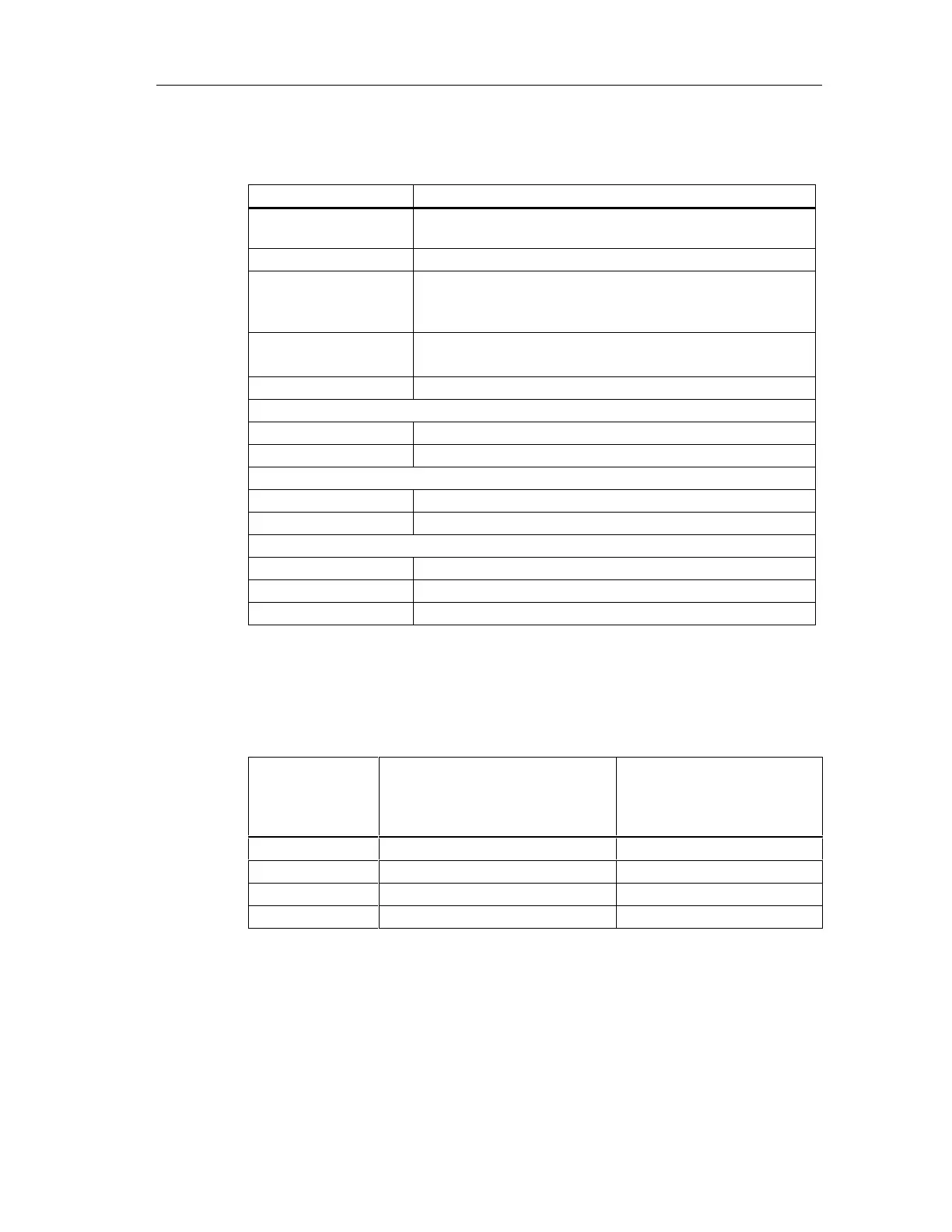Safety
Fail-Safe Systems
A5E00085588-03
7-5
Risk Parameters
The risk parameters have the following meaning in accordance with DIN V 19250:
Parameters Meaning
Extent of injury or
damage
S1 Minor injuries; minor harmful effects on the environment
S2 Serious irreversible injuries of one or more persons or fatality of
a person;
Temporary, seriously harmful effects on the environment
S3 Several fatalities;
Lasting, seriously harmful effects on the environment
S4 Catastrophic repercussions, large number of fatalities
Frequency and exposure time
A1 Rare to more often
A2 Frequent to continuous
Possibility of avoiding hazard
G1 Possible in certain circumstances
G2 Rarely possible
Probability of the unwanted occurrence
W1 Very low
W2 Low
W3 Relatively high
Safety Integrity Level in Accordance with IEC 61508
For each Safety Integrity Level (SIL), IEC 61508 defines the probability of failure of
a safety function allocated to a safety-related system as a target measure.
Safety integrity
level
Low Demand Mode of Operation
(Average probability of failure to
perform its design function on
demand)
High Demand or Continuous
Mode of Operation
(Probability of a hazardous
failure per hour)
4 ≥ 10
-5
to < 10
-4
≥ 10
-9
to < 10
-8
3
≥ 10
-4
to < 10
-3
≥ 10
-8
to < 10
-7
2
≥ 10
-3
to < 10
-2
≥ 10
-7
to < 10
-6
1
≥ 10
-2
to < 10
-1
≥ 10
-6
to < 10
-5
The actuators and sensors generally contribute most to these failure probabilities.
Each safety function always comprises the entire chain, from the collection and
processing of information to the intended action.
The equipment involved, such as the S7 F/FH programmable controller, sensors
and actuators, must in its entirety fulfill the AK and SIL determined as a result of
risk assessment.
If control functions and associated protection functions are implemented together in
the same S7 F/FH, this is said to be high-demand or continuous mode.

